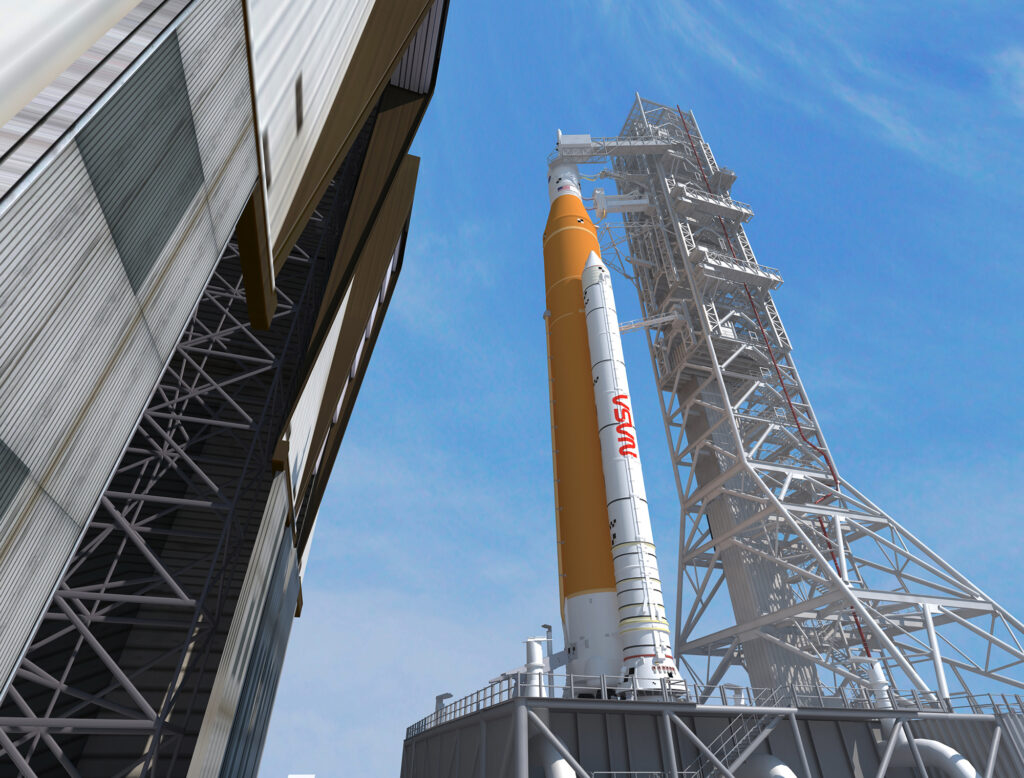The American space agency has taken the decision to shorten the test period of the SLS, its latest launcher model, and to bring it back to its garage. The rocket must undergo repairs there.
The tests of the Space Launch System (SLS), NASA’s XXL rocket which should enable the Artemis missions to bring astronauts back to the Moon, are not going exactly as planned. The tests, which had already been postponed once due to technical problems, took place on April 12 and 14, 2022. NASA teams had to test a crucial step: the arrival of liquid fuel in the rocket, a step called “ Wet Dress Rehearsal “.
But new problems prevented NASA from completing this step, and the American space agency announced on April 17 that it had made the decision to bring the SLS back to its building. A long operation that could delay the mission.
Problems during testing
” Many improvements need to be made outside of the launch base, and NASA is going to take this opportunity to bring back SLS and [la capsule] Orion in the Vehicle Assembly Building [son bâtiment d’assemblage] “, announced the American space agency on April 17 on its site. NASA also said it would replace a faulty valve on the second stage of the SLS. It will also repair a leak in the refueling boxes at the foot of the rocket, and NASA has indicated that it will ” review the plan » propellant gas loading test operations.
The decision was taken when the last three operations of wet dress rehearsal were hampered by technical problems. The magazine Ars-Technica explains that the complications took place at the level of the mobile launch tower, the ground equipment responsible for providing propellants, and the rocket itself. ” In the latest tests, which took place on April 14, NASA managed to charge the liquid oxygen tank to 49% and the liquid hydrogen tank to 5%. “says the newspaper.
Taking the decision to bring the SLS back to its assembly building is not trivial. The SLS is indeed huge: the rocket is 98 meters high without the Orion capsule, and almost over 2,500 tons. Moving such a behemoth is therefore a challenge and can take time: Ars Technica estimates that it would take a week to prepare the SLS and roll it to the assembly building. Once arrived, the rocket could stay “ in the garage » throughout the month of May.

The SLS will be used for the Artemis mission
For now, however, NASA has not given more details on the impact that these repairs would have on the mission’s launch schedule. The SLS is due to make its maiden flight in 2022. For now, the latter has not been postponed officially, but if NASA’s technical problems continue, the SLS may not be launched in May, as it was. foreseen.
The flight of the SLS takes place within the framework of the Artemis mission: it is this mission that should allow astronauts to return to the Moon – the launcher is therefore of paramount importance. However, the return of men to the Earth’s natural satellite is not planned immediately: the first mission of the SLS will be an unmanned flight.
The SLS must take off with an Orion capsule on its top and must circumnavigate the Moon to make sure everything is running smoothly. The next mission, Artémis 2, is scheduled for 2024, and must follow the same trajectory, but this time with a crew on board. Artemis 3, which is expected in 2025, will have to drop astronauts on the Moon.

